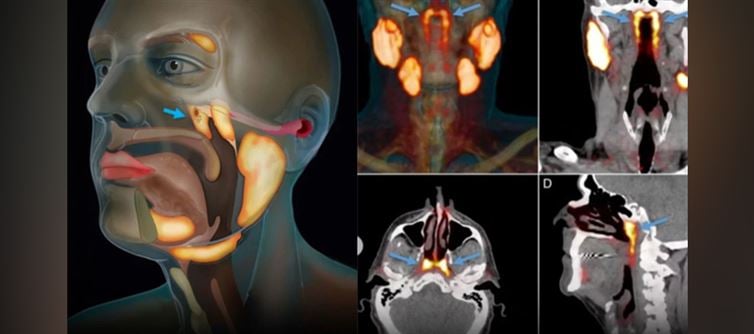
For centuries, medical science believed we fully understood human anatomy. But researchers from the Netherlands cancer Institute have uncovered a shocking secret: a previously unknown organ tucked away in the human throat. Here’s what you need to know:
1. The Accidental Discovery
While experimenting with PSMA PET-CT scans (used mainly to detect prostate cancer), scientists noticed two unexpected regions lighting up in the nasopharynx, the area behind the nose. What they found would challenge centuries of anatomical knowledge.
2. Meet the Tubarial Salivary Glands
The newfound organs, now named tubarial salivary glands, are located behind the nose, above the torus tubarius cartilage, and measure about 1.5 inches (3.9 cm) in length. Their main role? Likely to moisten and lubricate the top part of the throat, aiding swallowing and speaking.
3. Universal Presence
Remarkably, these glands were identified in all 100 patients studied and confirmed via cadaver dissections, proving this wasn’t a rare anomaly but a standard, hidden part of human anatomy.
4. A Breakthrough for cancer Patients
Radiation therapy for head and neck cancers often damages salivary glands, leading to difficulty swallowing, speaking, and eating. The discovery shows that avoiding radiation to these glands could drastically reduce side effects, improving patients’ quality of life.
5. Validation Through Cadavers
To verify their findings, researchers dissected two cadavers, confirming mucosal gland tissue with ducts emptying into the upper throat. This overturned long-standing assumptions about human anatomy and proved the glands’ existence.
6. How This Could Revolutionize Treatment
Radiation oncologist Wouter Vogel explains that by sparing these glands, doctors can minimize complications from therapy, directly enhancing survival and post-treatment comfort for thousands of patients worldwide.
7. The Science Behind the Discovery
Using the radioactive tracer during PSMA PET-CT scans, the research team highlighted previously unseen regions, revealing that our bodies still hold secrets even after centuries of study.
8. What’s Next?
The researchers now aim to:
Determine how best to protect these glands during radiation therapy
Identify which patients would benefit most
Potentially revolutionize clinical approaches for head and neck cancers
9. A Century-Old Mystery Solved
The discovery underscores an incredible truth: even in well-studied fields like human anatomy, the body still hides mysteries—and unlocking them could directly improve human health and survival.
10. Takeaway
The tubarial salivary glands’ discovery is more than an anatomical curiosity—it’s a medical breakthrough with the potential to change how cancer treatment is administered, offering hope for safer, more comfortable therapies for patients worldwide.




 click and follow Indiaherald WhatsApp channel
click and follow Indiaherald WhatsApp channel